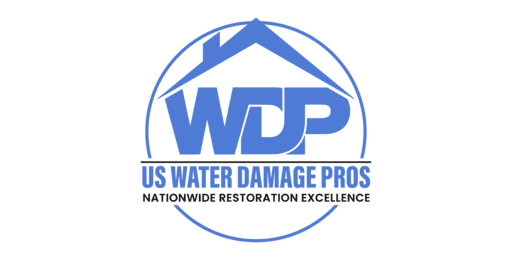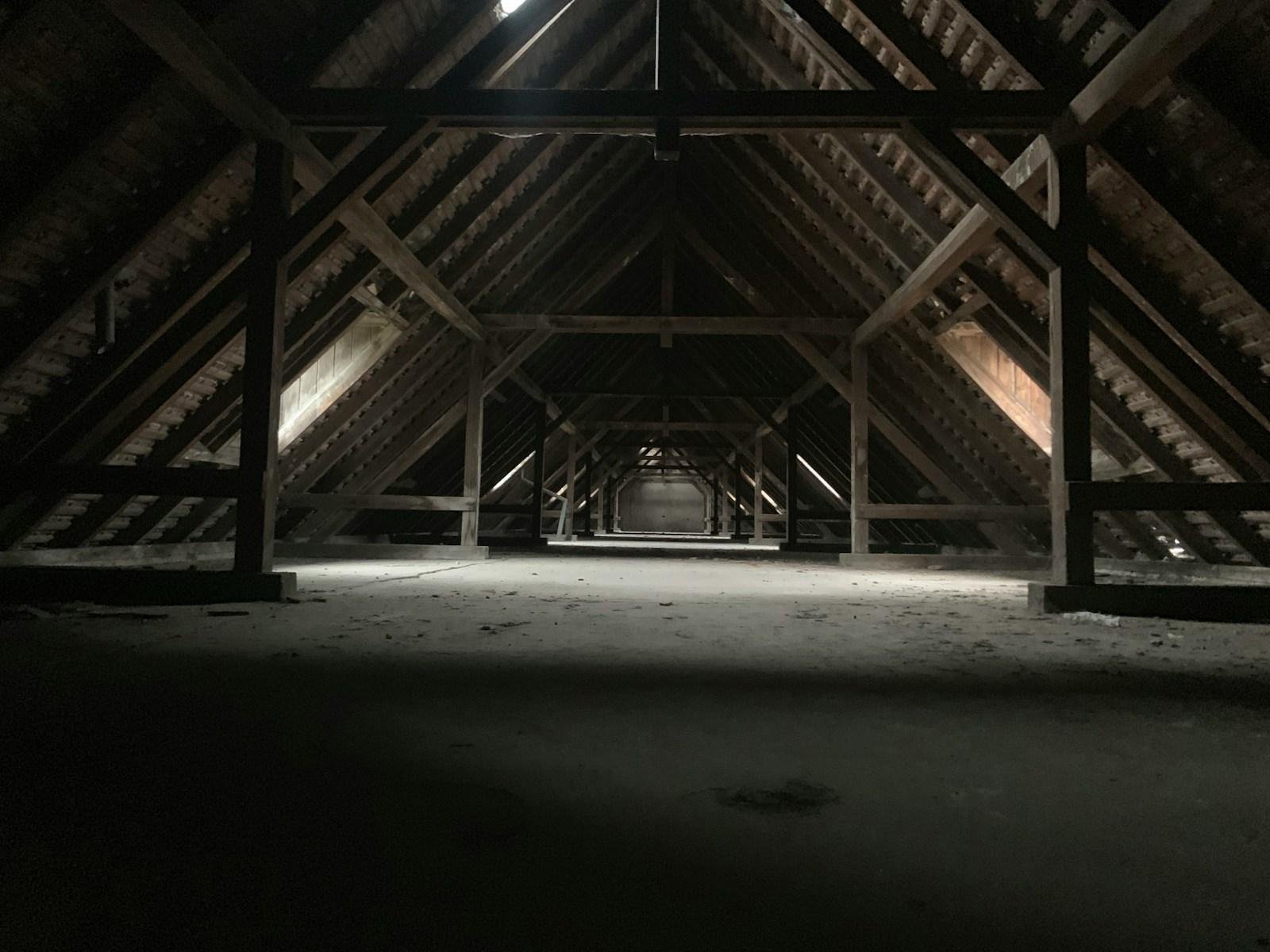Understanding Attic Water Damage: Causes, Signs, & Repair Solutions
Common Causes of Water Damage in the Attic: Roof Leaks
Water damage in the attic can arise from several common causes, each contributing to moisture accumulation and potential structural damage. One of the primary culprits is attic leaks, often stemming from missing or damaged shingles, inadequate flashing, or compromised roofing materials.
Severe weather events, such as heavy rain or wind, can exacerbate these vulnerabilities, allowing water to infiltrate the attic space. If left unaddressed, these leaks can lead to significant wood rot and mold growth, impacting the overall quality of the home.
Water Damage Restoration
Call 1-833-794-4554
Poor insulation is another factor that can contribute to attic water damage. Inadequate insulation can lead to uneven temperature distribution within the attic, resulting in condensation. This phenomenon occurs when warm, moist air comes into contact with the cooler surfaces of the attic, forming water droplets.
Over time, this accumulation of moisture can damage insulation materials and ceiling structures, creating an environment conducive to mold development. Excess moisture in the attic can further exacerbate mold growth, posing health risks and compromising the living environment.
Furthermore, damaged or blocked gutters play a crucial role in water management. When gutters become clogged with debris, water can overflow and seep into the attic, particularly if there are structural vulnerabilities.
Ice dams can also form as snow melts and refreezes along roofs and gutters, blocking proper drainage and leading to water damage in the attic. Regular maintenance of gutters ensures proper drainage and reduces the risk of water accumulation in undesired areas.
Condensation issues, often exacerbated by inadequate ventilation, also contribute to attic water damage. Proper ventilation allows for adequate air circulation, reducing humidity levels and preventing moisture buildup.
Roof leaks are another critical factor in assessing water intrusion issues in the attic, necessitating immediate action to prevent structural damage and potential health risks. Homeowners can mitigate these risks by ensuring that their attics are well-insulated, maintaining gutters, and monitoring for signs of water infiltration.
Implementing these preventative measures can be instrumental in safeguarding the integrity of an attic, thereby preserving the overall structure of the home.

Identifying the Signs of Water Damage in the Attic: Mold Growth
Detecting attic water damage early is crucial for effective remediation and preventing further deterioration of your home. By familiarizing yourself with the visual and physical indicators of water-related issues, homeowners can take timely action.
One of the most common signs of water damage is discoloration on the walls and ceilings. Brownish or yellow stains often indicate previous leaks or ongoing moisture issues. Over time, these stains can expand and lead to structural problems if left unchecked.
Another prominent indicator of attic water damage is the presence of mold or mildew. These fungi thrive in damp environments and can develop rapidly in poorly ventilated spaces. Homeowners should be vigilant for patches of mold growth. Mold can be dark green, black, or even white. These are often accompanied by a musty odor that is indicative of persistent moisture. If you detect such smells, it is advisable to inspect the attic thoroughly, as mold can cause health issues and exacerbate existing respiratory problems.
Additionally, damp or wet insulation is a clear sign of water infiltration. This can lead to reduced energy efficiency and increase the risk of mold growth. Homeowners should examine insulation for any signs of moisture; wet insulation can feel heavy and may have a foul smell. Damp insulation can indicate underlying water intrusion issues, which may lead to sagging and loss of effectiveness.
To facilitate a thorough inspection, consider having essential tools on hand, such as a moisture meter and a flashlight to spot hidden leaks or pooling water. A moisture meter can provide accurate readings, helping detect areas that may not yet show visible signs of damage. If a water leak is detected, timely action is crucial to mitigate potential damage and prevent further issues.
By remaining aware of these signs and conducting periodic inspections, homeowners can address attic water damage before it leads to more significant issues, ensuring the longevity and safety of their living spaces.
Assessing the Damage
Assessing the damage caused by attic water damage is crucial to determine the extent of the issue and identify any potential hazards. Begin by thoroughly inspecting the attic space for visible signs of water damage. Look for water stains, warping, and discoloration on walls, ceilings, and insulation.
These indicators often point to moisture buildup and potential structural issues. Pay close attention to any musty odors, as they can signal mold growth and excessive moisture.
Check the insulation for dampness or wet spots. Wet insulation can feel heavy and may emit a foul smell, indicating water infiltration. Use a moisture meter to detect hidden moisture that may not be immediately visible. Document all findings with photographs and detailed notes, as this information can be invaluable for insurance claims and repair planning.
Prompt assessment of the damage is essential to prevent further deterioration and ensure the home’s structural integrity. By identifying the extent of the water damage early, homeowners can take the necessary steps to address the issue and protect their property from long-term harm.
Water Damage Restoration
Call 1-833-794-4554
Immediate Actions to Take When You Discover Water Damage
Upon discovering water damage in your attic, the initial step should be ensuring your personal safety. Make sure to turn off the electrical power in the affected area to avoid any electrocution risks, as water can conduct electricity.
If the water damage appears extensive or if there are signs of structural compromise, such as sagging ceilings or floors, it is advisable to evacuate the premises and avoid entering the affected area until safety is confirmed.
Next, contact a professional water damage restoration service. These experts are equipped to handle such situations and can efficiently assess the severity of the attic water damage. They possess the necessary tools, techniques, and experience to mitigate risks, remove water, and begin the drying process effectively.
Furthermore, waiting too long to engage professionals can lead to increased damage and higher repair costs due to mold growth and structural damage. Water leaks can lead to significant structural issues, mold growth, and various health risks, emphasizing the need for immediate intervention and proper prevention strategies to maintain a safe living environment.
Once you have ensured safety and contacted professionals, it is essential to begin the cleanup process, if it is safe to do so. Start by documenting the damage through photographs for insurance claims and your records.
If possible, move any items that could be affected by the moisture away from the water source. This may include storing personal belongings like boxes of clothes, books, or other possessions in dry areas. Additionally, ventilate the space by opening windows if weather permits, and using fans can aid in reducing humidity levels, which could help prevent further damage.
Timely action is critical when dealing with water damage in your attic. The sooner you act, the more likely you are to minimize further destruction and costs associated with repairs. Addressing damage swiftly will also help protect the integrity of your home and ensure a return to normalcy as soon as possible.
Stopping the Leak
Stopping the leak is the first step in addressing attic water damage. Begin by identifying the source of the leak. Follow the drips upward or look for signs of water stains, warping, and discoloration. Inspect the roof for damaged or missing shingles, deteriorated flashing, and poor installation of roofing materials. These are common culprits of roof leaks that can lead to significant water damage in the attic.
If the leak is caused by a roof issue, take immediate action to patch the hole or replace the damaged shingles. For temporary fixes, roofing tar or a tarp can be used until professional repairs can be made. If the leak is due to condensation or poor ventilation, ensure proper ventilation by installing attic vents, exhaust fans, or attic fans. Proper ventilation helps reduce moisture buildup and prevents future leaks.
Addressing the source of the leak promptly can prevent further damage and reduce the risk of mold growth and structural damage. Taking swift action to stop the leak is crucial in protecting your home and maintaining a safe living environment.
Repairing Water Damage in the Attic: A Step-by-Step Guide for Wet Insulation
Addressing attic water damage requires a systematic approach to ensure effective repairs and long-term prevention. The initial step involves assessing the extent of the damage. Carefully inspect the space for visible signs such as stained insulation, warped wood, or mold growth. Utilize a flashlight to illuminate dark corners and look for sagging ceilings, as these may indicate moisture accumulation beneath the surface.
Once the damage is assessed, the next step is to remove any affected materials. Start by wearing appropriate protective gear, including gloves and a mask, to safeguard against potential contaminants. Remove wet insulation, drywall, and any other materials that cannot be salvaged due to contamination or decay. During this process, it is critical to dispose of these materials properly to prevent further issues elsewhere in the home.

After the removal of damaged materials, the focus shifts to drying out the attic space. Utilize fans and dehumidifiers to promote air circulation and effectively lower humidity levels. Opening windows, if weather permits, can also enhance ventilation. Ensure that the drying process is thorough, as lingering moisture can lead to mold growth and additional structural damage.
Depending on the extent of the water damage, structural repairs may be necessary. Inspect beams, rafters, and any other wooden elements for signs of weakening or rot. If the damage is significant, it may be necessary to replace these structural components to maintain the integrity of the attic.
Addressing water damage is crucial to maintaining your home’s structural integrity and overall stability. In cases where the damage is extensive, or if you feel uncomfortable with the repairs, it is advisable to consult a professional contractor who specializes in water damage restoration.
Finally, to prevent future attic water damage, it is crucial to address any underlying issues causing leaks. Regularly inspect your roof for wear and tear, clean gutters to ensure proper drainage, and check for any plumbing leaks that could affect your attic. These proactive measures will help safeguard your home and keep your attic dry and structurally sound.
Preventing Future Water Damage
Preventing future water damage is crucial to maintaining a safe and healthy living environment. Regular roof inspections can help identify potential issues before they become major problems. Look for signs of wear and tear, such as cracked or missing shingles, and address them promptly.
Ensure proper ventilation in the attic space to prevent excessive moisture buildup. Installing attic vents, exhaust fans, or attic fans can help maintain adequate airflow and reduce humidity levels.
Consider installing a vapor barrier to prevent moisture from seeping into the attic. Monitor indoor humidity levels and adjust as needed to prevent moisture buildup. Using a dehumidifier can be effective in maintaining optimal humidity levels.
Regularly inspect the attic space for signs of water damage, mold growth, and musty odors. Addressing condensation issues and ensuring proper ventilation can prevent attic water damage and maintain the home’s structural integrity.
By taking these proactive measures, homeowners can safeguard their attic spaces from future water damage and ensure a dry, healthy living environment.
The Importance of Professional Help
While some homeowners may attempt to address attic water damage on their own, it’s essential to seek professional help to ensure the issue is resolved properly. Water damage professionals have the training, equipment, and expertise to assess the damage, stop the leak, and prevent future water damage.
They can identify potential hazards, such as structural damage and mold growth, and provide recommendations for repairs and prevention.
Professional help can also provide peace of mind, knowing that the issue is being addressed by experts. These professionals use advanced tools and techniques to thoroughly dry and repair the affected areas, reducing the risk of future problems. Additionally, professional intervention can help prevent costly repairs and maintain the value of the property.
By enlisting the help of water damage professionals, homeowners can ensure that their attic water damage is addressed comprehensively and effectively, protecting their home and investment for the long term.


